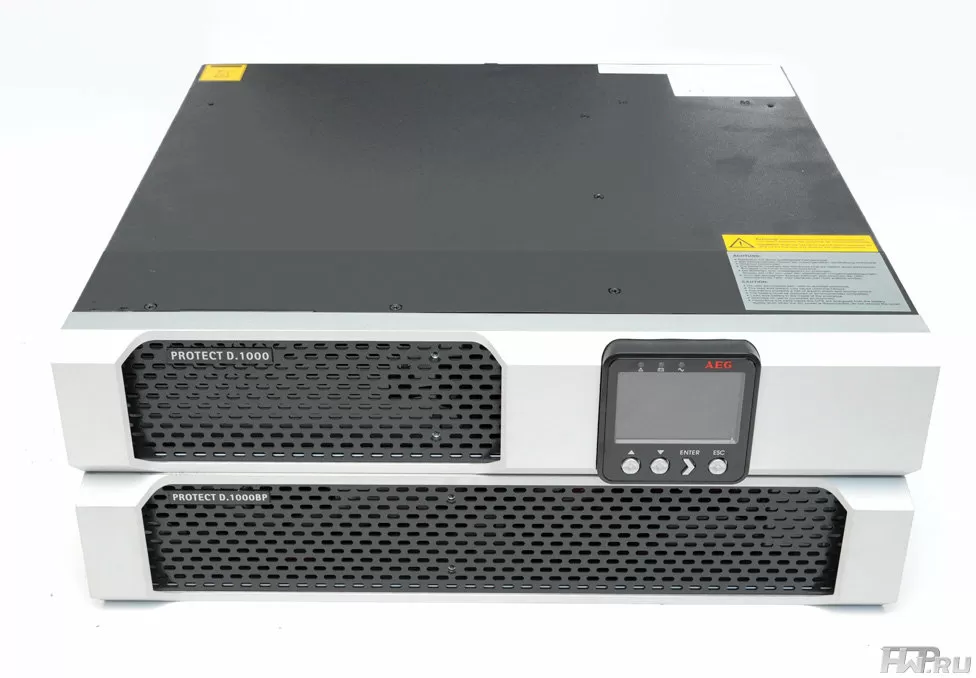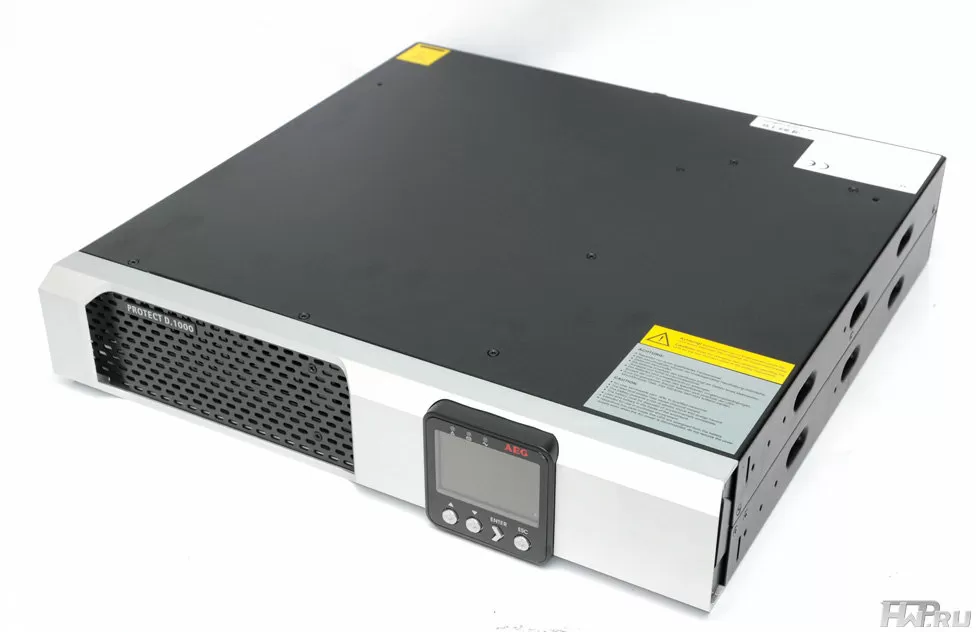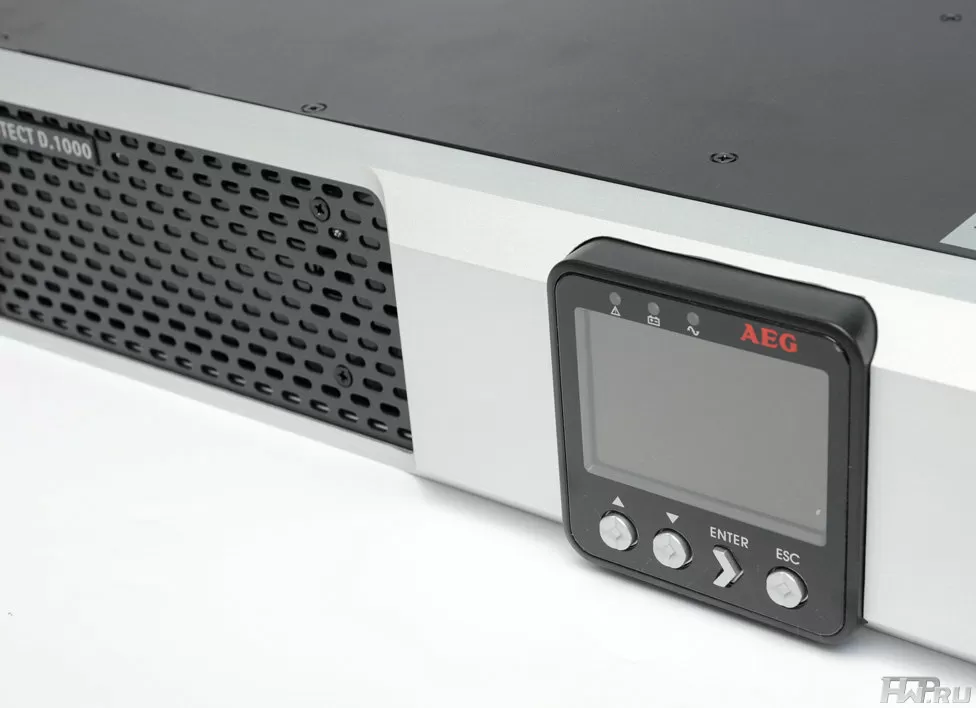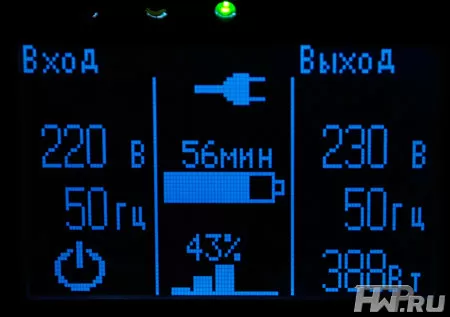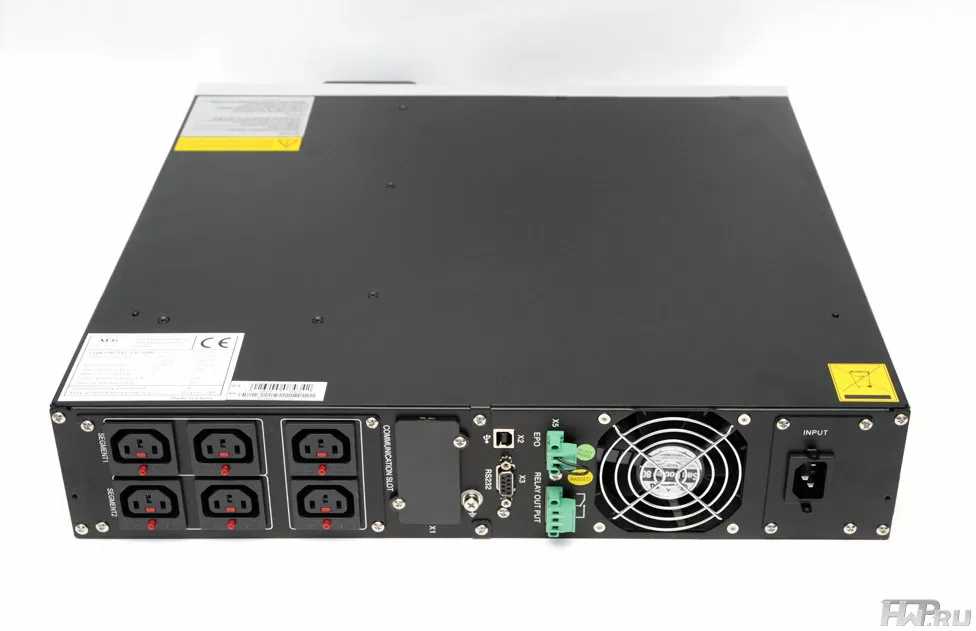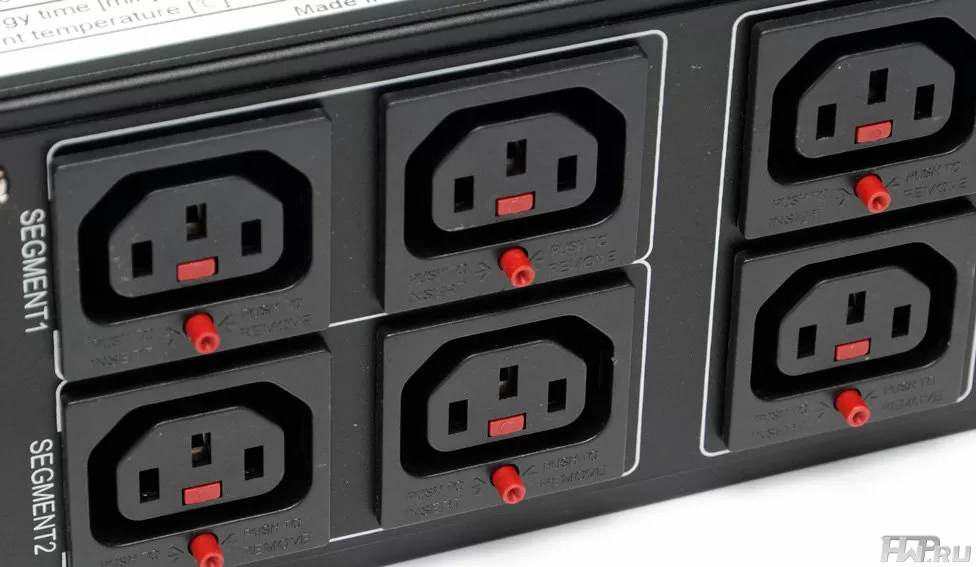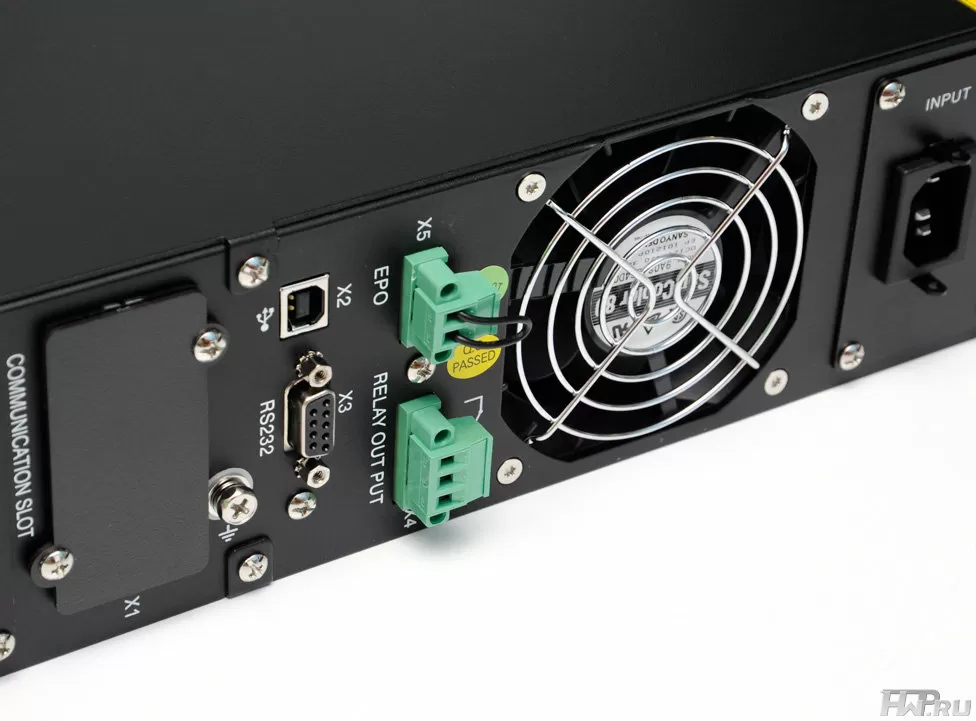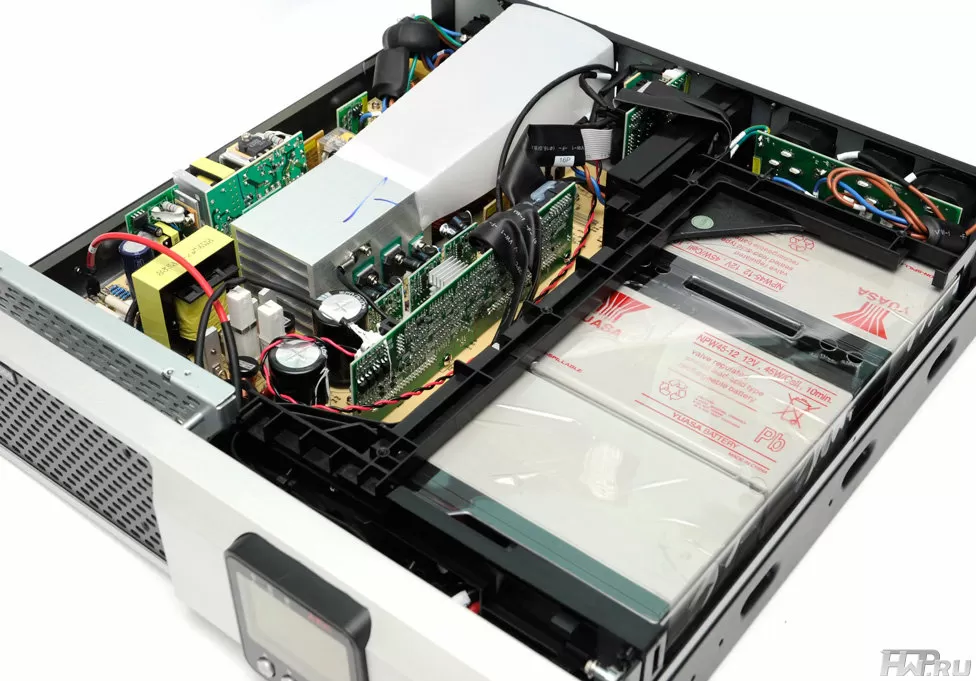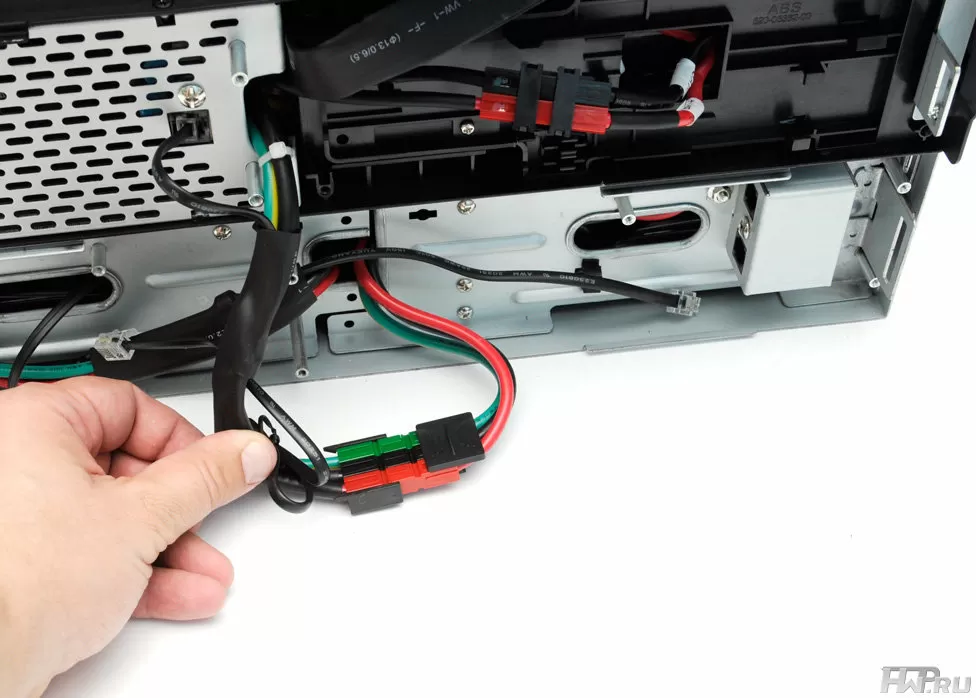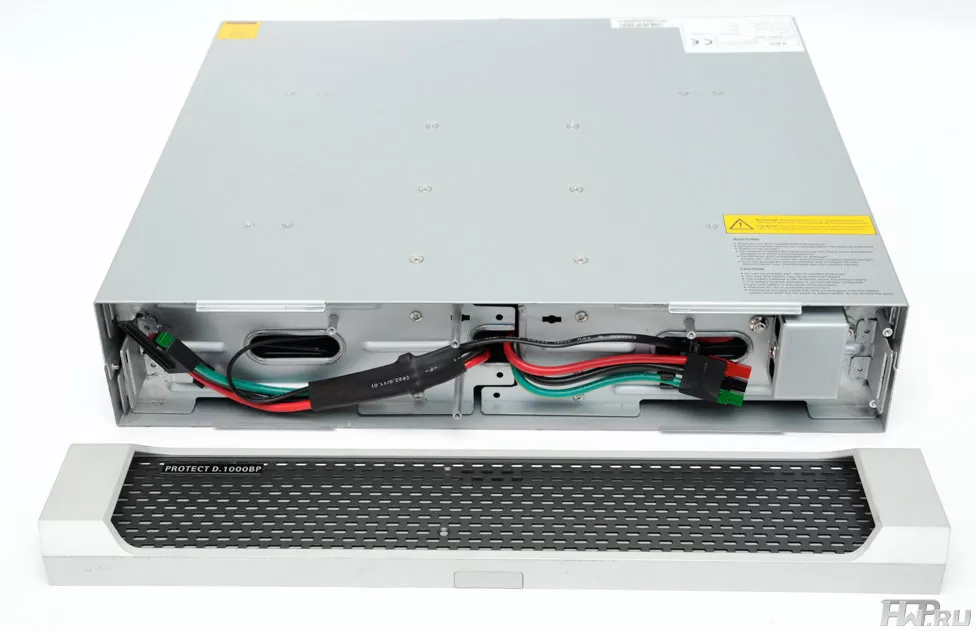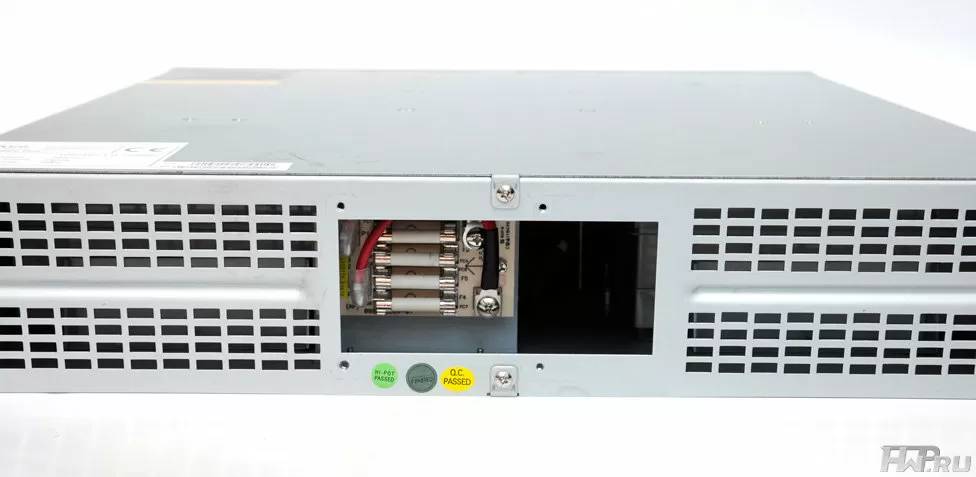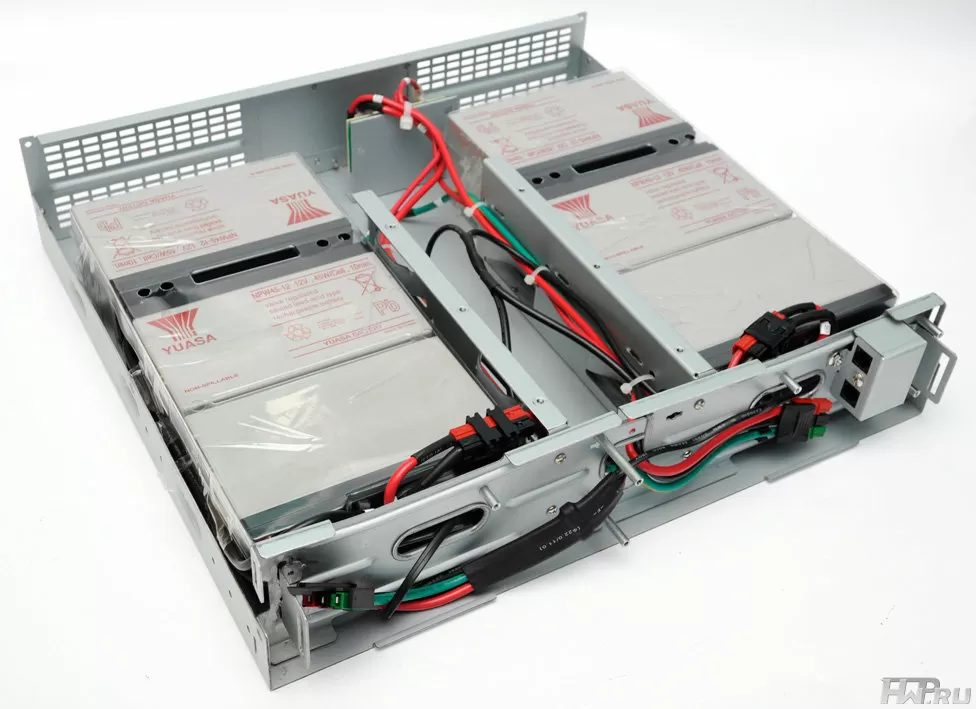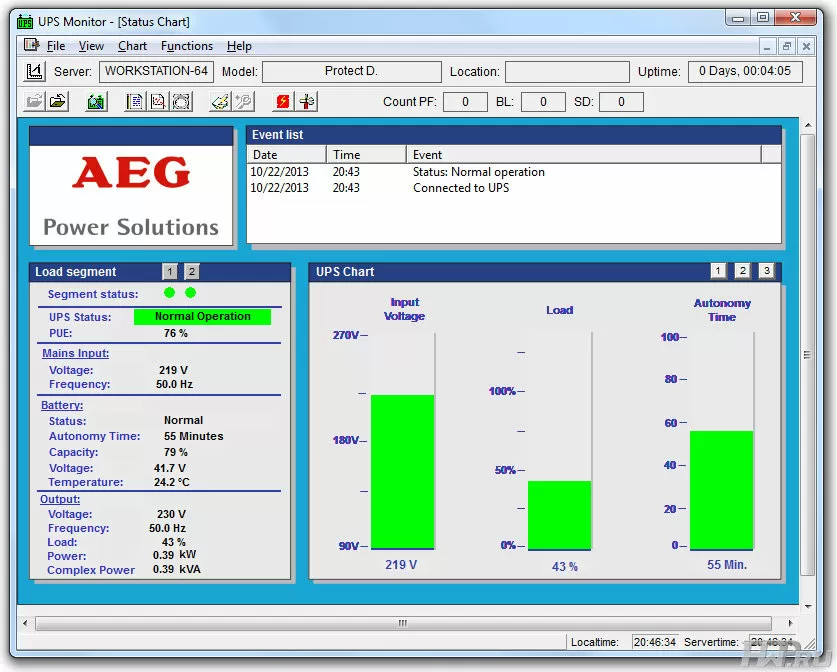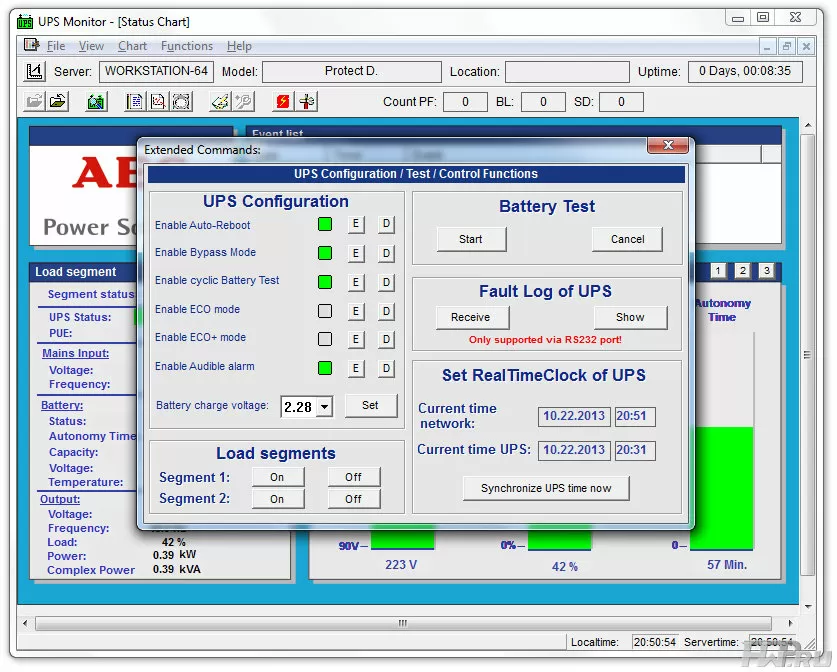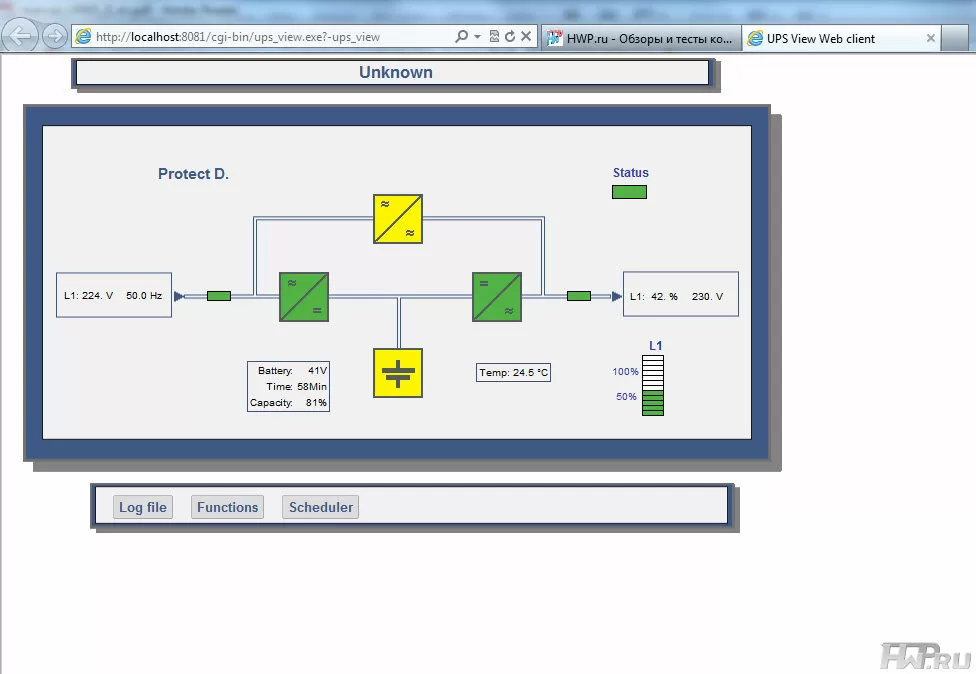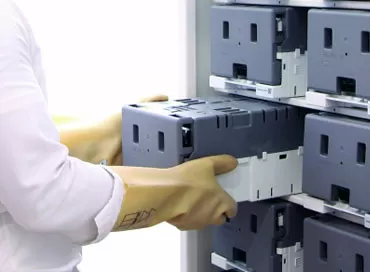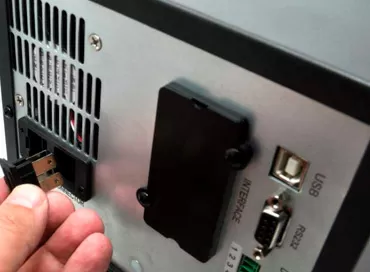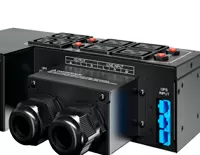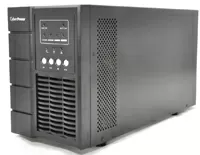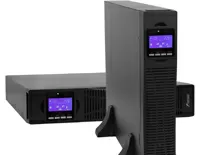Review of the uninterruptible power supply AEG Protect D.1000 2U format
For most of us, AEG is strongly associated with home appliances, and when we hear that this company also offers uninterruptible power systems, it brings an ironic smile: 'Well, from washing machines to UPS ''. However, even a cursory study of the issue reveals the situation from the opposite side: the AEG company was founded already in 1883, as a direct competitor to General Electric. In the energy business, AEG manufactured a variety of equipment, including generators, solar panels, substation and UPS equipment, as well as electric locomotives in the mid-20th century and even aircraft from 1912 to 1918. In the history of the company there were many acquisitions and mergers, so today it employs about 180 thousand people around the world.
The AEG brand has been licensed by many companies, in particular the Swedish Electrolux, thanks to which we know wonderful washing machines and dishwashers, "made with the mind". AEG ID, for example, manufactures RFID readers and tags. Today we will talk about the products of AEG Power Solutions, a manufacturer of uninterruptible power supplies, industrial inverters and rectifiers.
Protect D Series Rack UPS
For server rack protection, AEG offers a range of models, from simple line-interactive to online modular, providing fault tolerance in N + X configurations. The Protect D series, which we are talking about today, includes models with double conversion (online), designed for loads from 1000 to 10,000 VA and operation in single-phase networks. AEG Protect D uninterruptible power supplies have built-in batteries, and also allow you to connect up to 4 battery modules, so you can choose your own balance of battery life and rack space, depending on the needs of your infrastructure. At the time of this review, the Protect D series included 6 UPSs with a capacity of 1000 to 10,000 VA and 5 battery modules of the same capacity.
Among the features of the Protect D series, AEG distinguishes higher efficiency than products of the same class (from 88% to 98%), protection against accidental disconnection of power connectors, four types of connection interfaces (rs232/USB/Slot/EPO) and the ability to use the devices as frequency converters, if necessary.
It should be noted that by default all AEG Protect D UPSs have two interfaces: RS232 and USB, as well as a slot for connecting an SNMP card. In accordance with the requirements for the power supply of data centers, the UPS has a programmable output for connecting a relay and an input for connecting an emergency power off (EPO) system. Let's take a look at the construction of the AEG Protect D 1000.
Construction AEG Protect D.1000
Apparently, the Germans have such a strong craving for unusual design solutions in their blood that even in such a boring device as a rack-mount UPS, they find a place for the flight of engineering thought. Well, look at AEG Protect D - a rare server looks just as stylish, but the main thing is functionality. To begin with, the UPS is completely metal, with an aluminum bezel that opens upward, somewhat reminiscent of an old movie secretaire.
Behind the removable front panel there is a compartment for changing the internal batteries and cables for connecting external battery modules. Outside, on the front panel itself, there is a small control screen with four buttons. During normal operation, it displays the voltage and status of the UPS.
I would like to immediately note the good localization of the built-in menu. A rare sysadmin needs to translate the settings into Russian, but the manufacturer has taken care of those who are used to handling equipment in their native Russian.
If you look at the AEG Protect D from the back side, you will immediately notice three pairs of IEC-320 sockets with unusual buttons. These are blockers that prevent accidental disconnection of plugs from sockets - to disconnect the power cord, you will have to press the red button on the outlet. They work with the most common cables, no special ones are needed. The main thing is not to forget that your cable is locked and not to try to pull it out by force.
The sockets are divided into three groups: two segments of paired outlets controlled by software through the UPS and a pair of outlets with constant power for the most critical load. Software controlled power outlets allow you to shut off non-critical loads in the event of a power outage, thus conserving energy to power your more critical devices.
The EPO contactor allows the connection of a large red Emergency Power Off button, which will open the EPO circuit and disconnect the UPS itself with all additional batteries and all connected loads.
This is the only way to turn off power-protected equipment together with the UPS in an emergency, when a simple pulling out of the plugs will not help, because if you turn off the power before the UPS, the batteries and connected equipment will work, if you turn off the power after the UPS itself the uninterruptible power supply and batteries will also work. EPO emergency shutdown extinguishes everything at once, so if AEG Protect D. stops showing signs of life, first of all check the jumper on the EPO pin pair.
Let's look under the UPS cover, and first of all, we are interested in batteries. AEG Protect D. uses the well-proven Yuasa NPW45-12 series calcium lead-acid batteries. Each battery has a capacity of 8.5 Ah, but they are usually labeled as 9 Ah. Usually, Yuasa batteries last in uninterruptible power supplies for 5-6 years, and if necessary, you can always buy similar or compatible batteries.
The electronic filling, which is a rectifier and an inverter, is placed very compactly, and the power diodes are fixed on a common large heatsink, blown by the system fan. The absence of an autotransformer inherent in line-interactive models greatly saves space in the case. And modern installation with daughterboards effectively takes away every centimeter of space allocated in the case, and everything says that without compromising quality. Well, take at least the electronics for hardware monitoring and UPS management - here it is a separate board, and not a small chip in the corner, like many Chinese UPS manufacturers.
AEG Protect D.1000 uses a separate charging device with pulse technology, which allows double conversion and battery charging independently, reducing overall UPS power consumption.
Once again, I would like to emphasize that, as befits models of this class, with AEG Protect D.1000 you can change the built-in batteries through the front panel, in hot-swap mode, without stopping the UPS and connected devices .
Protect D.1000BP Battery pack
Let's take a look at the Protect D.1000BP battery pack that you can connect to the AEG Protect D.1000 for increased battery life. To be honest, I opened the box with this battery pack before getting to know the UPS itself, and so I was a little surprised - it didn't have a single outlet.
Usually the battery pack is connected to the back of the UPS using some kind of proprietary cable, but the designers of AEG found that the front connection is more convenient for a UPS of this class. The thing is, connecting the batteries to the headunit from the back is easy when you install the equipment in a new, empty rack. And if you are dealing with a full cabinet in which you need to change the battery pack without turning off the UPS, then it is more convenient to do it from the front.
As with the UPS itself, for the AEG Protect D.1000BP battery module, you need to open the front cover by unscrewing two screws, remove the plug through which the wires will pass from above or below, well, and connect the corresponding connectors UPS and battery pack. In addition to the power wires, signal cables with an RJ11 telephone connector are also connected, which are necessary for monitoring the status of the battery packs by the head unit.
For short-circuit protection, Protect D. BP batteries are equipped with fuses that can be accessed from the rear. It is believed that if the fuse is blown, you will in any case have to remove the module from the rack for inspection and repair.
When several battery modules are connected, the connection is in series, and the length of the cables only allows the battery in the adjacent rack to be connected. So if the battery closest to the head unit breaks down, to which three more are connected, be prepared to rearrange the lowest one to the place of the failed one, otherwise you will not be able to reach the UPS itself with the wires.
For the UPS, select the battery pack according to its capacity, for example, Protect D.1000 should only be connected to Protect D.1000BP modules, and to Protect D. 3000 - only Protect D. 3000BP, and so Further. The only exception is Protect D. 2030BP, which fits Protect D.2000 and Protect D.3000.
Each Protect D.1000 BP module contains six Yuasa NP45-12 9 Ah batteries, that is, the same as in the UPS itself.
Software
Complete with the UPS, you will receive software for monitoring device parameters and a separate software, RCCMD, designed to shutdown computers remotely. There is not much to say about RCCMD: it is a weightless utility with a client and a server part. The server room is installed on a computer connected directly to the UPS through the interface port. When the batteries of the uninterruptible power supply are discharged, the server receives a shutdown command and transmits it to computers that are also powered by this UPS. Accordingly, you need to configure the RCMD client on each machine that needs to be shut down on a signal.
To monitor the status of AEG Protect D.1000, the UPS Monitor program is used (versions for Windows, Linux and MacOS are available. The utility is made in an industrial style, and it is immediately noticeable that the Germans did not bother with the interface.
Almost all parameters are collected on one start window, it is possible to configure the main parameters, conduct a test and disconnect the sockets that supply the first and second load segments, which we talked about earlier. If necessary, you can call the log file in text form and a window with diagrams of controlled parameters.
With one UPS Monitor program, you can manage several UPSs at once connected to the network via a computer or SNMP card. There is also a web-access to the UPS Monitor control panel, which will allow you to control the UPS from a smartphone or tablet. The wiring diagram shows the operation of the rectifier, inverter, as well as the load and temperature of the UPS.
Interestingly, the status of the pluggable battery pack is not displayed anywhere in the software. In general, you can understand that it is connected only by looking at the projected battery life: you disconnect the signal cable from the battery pack - it decreases. Perhaps unnecessary information would overload the interface, but personally I want to see a green "OK" status line in front of every battery pack on my system.
Testing
Modern servers, for the most part, have high-quality power supplies with active power factor compensation and high efficiency, so that their load on the network can already be characterized as active. For testing, we connected the AEG Protect D.1000 via LATR and supplied a 400 W (400 VA) active load.
The first thing that interested us was the difference between ECO, ECO + and Normal modes in terms of protecting connected devices. In general, the essence of the modes used is to disable double conversion when the power parameters are within acceptable limits. Indeed, why waste a rectifier and inverter when you can power your servers from the mains? This will reduce the cost of powering the UPS itself and achieve its 95% efficiency level.
In the normal mode, called High Reliability Mode, the AC current is first converted to DC and then back to AC, thus smoothing out any voltage surges. By smoothly regulating the input voltage from 70 to 250 Volts, we always received 230 V at the output. When the voltage rises above 250 Volts, the input circuit was turned off and the UPS switched to battery mode.
With input voltages between 130 and 190 volts, the UPS uses double conversion, in ECO and ECO + modes, this is the only section that uses a double conversion circuit. When the input voltage drops below 130 Volts, the UPS transfers to battery power in all modes.
The most interesting input voltage range is between 190 and 250 Volts. It is here that in ECO and ECO + modes AEG Protect 1000 D operates in bypass mode, that is, it supplies the load with voltage from the mains. The response speed to voltage changes in ECO mode is 10 ms, in ECO + it is 20 ms. In practice, in these modes, the UPS allows the output voltage to drop by 17% and increase by 9%, which is beyond the scope of GOST 13109-97, therefore, such modes should be used if you have connected modern servers with switching power supplies, since they are quite tolerant of such voltage fluctuations. When using specialized equipment that is demanding on power quality, we recommend using the double conversion mode, called the enhanced reliability mode.
As for the battery life, our 400-watt load could be powered by the UPS in an autonomous mode for 64 minutes , which corresponds to the declared characteristics. The internal power consumption in double conversion mode while charging the batteries was 164W , the power factor of the UPS was 0.99, which is practically an active load. From the point of view of economy, it is justified to connect a load of 600 VA (590 W) to the AEG Protect D.1000. Although, given that this is the youngest model in the company's line of expandable on-line UPSs, you can neglect efficiency and connect any load that requires protection.
It should be noted that after several days of testing the AEG Protect D.1000 with an additional battery module, we still could not achieve 100% battery charge. The maximum that the UPS showed after a daily charge is 92%, despite the fact that it took several hours to charge up to 90%. By the way, the Protect D series has an intelligent temperature coefficient compensated battery care system that you can tune to keep your batteries in optimum condition. It allows for cyclic battery tests, including self-discharge (rest) or trickle charge for high availability.
Warranty
AEG uninterruptible power supplies are covered by a 3-year warranty (2 years of basic warranty + 1 year with free registration on the manufacturer's website). We recommend that you definitely use product registration when purchasing. There are no expansion packs or warranty extensions for this product yet.
Conclusions
If earlier for some people the AEG company was associated only with household appliances, then I hope that now you can say that this consortium also deals with energy products, in the history of the company there are cars, airplanes and diesel locomotives, and few can boast of such a track record.
The Protect D 1000 series uninterruptible power supplies look modern even against the background of their competitors and seriously declare their presence. Yes, this is not the case when the main trump card of the product is the price, and you can close your eyes to the rest. Here we are dealing with a really high-quality, well-developed product.
Benefits of AEG Protect D.1000:
- Control and adjustment via LCD screen
- Full metal body
- Connecting battery modules from the front
- Frequency conversion mode
- Trip protected sockets
- Two managed load segments and one permanently connected
- Intelligent Battery Charging System
- Some of the most reliable batteries
- Connecting EPO and Protection Relays
Disadvantages of AEG Protect D.1000:
- Battery module wire length - you can only connect the device in the adjacent rack compartment.
- Inconvenient front panel closing mechanism
We recommend using AEG Protect D.1000 uninterruptible power supplies in increased reliability mode, because this is what On-Line UPSs were designed for, to be sure every second of the protection of all equipment, and of the correct protection. Affordable price, interesting design solution, full functionality in accordance with the requirements for organizing modern data centers - these uninterruptible power supplies combine all those qualities that make them an excellent choice for power protection in single-phase networks.
Mikhail Degtyarev (aka LIKE OFF)
10/27/2013

